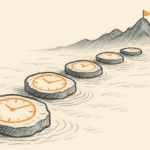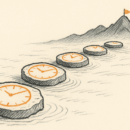We collectively blew Kenya’s tourism away
What ails Kenyan tourism? Why does it go reeling from disaster to crisis? Is it really all to do with bombs and clashes, terrorists and politicians? These are merely smokescreens; when you look through the miasma, an ugly picture of complacency, giant-sized egos and misguided strategies emerges.
Look first at the product. There’s no doubt about it: when it comes to landscapes, we’re right up there. We have sweeping savannas that make the heart sing, picture-perfect beaches that cleanse the mind, and soaring mountains that pacify the soul on its upward journey. We have hidden universes of creatures in our deep oceans, the second-largest collection of bird species on the planet, and rolling plains where the daily dramas of nature have been played out for centuries. We have it all, and the world knows it. You just can’t get this stuff anywhere else.
Thus far, it’s all God-given. We are truly blessed, but what do we do with the blessing? We take it for granted. We assume that the beauty of our country is all that we need. We rest on our laurels and sit on our hands. And when the tourists go elsewhere, we thrash around desperately looking for someone to blame: the terrorists who gave us bombs, the politicians who gave us ethnic clashes, and the government that destroyed our infrastructure.
Yet if you look carefully, in many cases the ‘product’ has not changed since the 1970s. Many of our resorts serve the same tired, unimaginative buffets that they served when Jomo Kenyatta was last seen on our bank notes. Many lodges take you on game drives in the same rusted old jalopies that they were using in the days of black-and-white television. Many hotels have the look of a place lost in time – metal doors, formica tops, linoleum floors. This is not a failure in gathering resources – it is a failure of imagination. Why can’t we develop a ‘nouvelle’ African cuisine that borrows from other influences and caters for modern international tastes? Why can’t we teach our staff the ability to smile? Why can’t we know where money needs to be spent – and spend it, confident of a return on the investment?
The harsh fact is that many of our operators made a killing in the 1970s and early 1980s, and then sat back with their hands on their stomachs. They thought the beauty of the country was sufficient; tourist numbers would only grow and grow. They began to raise prices unrealistically, thinking demand was inelastic. They started to play games with the exchequer, inflating their off-shore input costs and taking their profits elsewhere. They spurned the opportunity to develop the domestic market in any meaningful way. Well, it’s wake-up time: visitor numbers have been on a plateau since the mid-1980s. Throughout the past ten years, South Africa, Botswana, Mauritius and Dubai have grown their market share at our expense.
Visit these countries and you will see why. The facilities are sparkling, the smiles heartfelt, the cuisine adventurous and innovative, the logistics executed with flair and competence. In short, they have kept pace with the evolving market. They have kept their product moving. They have invested in new facilities, and can confidently charge for them.
Wait a minute, you say, your strokes are too broad, your judgements too sweeping. We have high-quality resorts and hotel chains here, surely? Yes we do – but too few to make a difference. The number of operators that use imaginative architecture, or give real thought to their cuisine, or actually try to offer real value for the customer’s money, is just too low to matter. But it is true that those who have done these things enjoy the benefits come rain or shine – their occupancy rates and revenues per head are invariably the highest in the land.
What of the government of this fair land? All we asked it to do was look after a few things. Firstly, to ensure that the beauty of the land was protected. Take a look at the plastic waste littering the roads to the resorts, the debris in our once-clear ocean waters, and the traffic jams in the middle of the Mara, and you’ll see how effectively that was done. Secondly, we asked that our roads and airports and telephone lines be maintained and improved over time. You need to hear nothing more from me on whether that one was delivered. And lastly we asked the government to guarantee security for our visitors. Yes, well.
So, we collectively blew it. Could it have been done differently? Of course it could have. To show you this, let me take you on a short tour of a country I have had the privilege to visit: the Maldives. This country consists of nearly 1200 islands scattered like pearls over the Indian Ocean – none more than a couple of kilometres across or higher than a few metres above sea level. Maldives, as you can imagine, was a country of fishermen, albeit one of breathtaking beauty. The early visitors were enthusiastic, but in 1972 the UNDP warned that tourism would never succeed in the Maldives – there was no local expertise, no infrastructure, no cultural attractions, no local supplies of suitable food and it was too remote. Fortunately, those who mattered didn’t listen.
Its tourism industry started in the wrong way in the 1970s and did all the wrong things – put up very basic facilities, offended the local culture, and, most damagingly, began doing great harm to the fragile ecosystem. At the same time that an ex-teacher was taking the reins in Kenya in 1978, a former university lecturer called Abdul Gayoom became the Maldives’s president, and with him came a new dawn for tourism. He commissioned a study by a Danish consulting firm to develop a new long-term strategic plan for the nation’s tourism. This study recommended a specific competitive positioning: stop marketing the islands as a cheap seaside destination, and focus instead on quality tourism. To achieve this, specific measures were out in place: all resorts were to be registered with the government, confined to uninhabited islands, and required to conform to strict quality and environmental standards.
Islands are leased out to only one resort at a time. When a lease comes up for renewal, the government can require a major upgrade and renovation as a condition of renewal. New leases are subject to competitive bidding, where the developer with the best plan and the highest bid will receive exclusive rights to the island. Environmentally friendly desalination plants and waste-disposal units are a condition of the lease – and their cost is expected to be recouped through the room rate.
With these regulations in place, the industry moved steadily to the top end of the market. The country protected its underlying product and ensured future revenue streams. Visitor numbers grew from a mere 1,000 in 1972 to over 400,000 by the late 1990s. Room-rates are USD 250 – 500 per person per night. And despite that high price, average occupancy is a shade under 80 per cent – a staggering achievement. The Maldives was one of the poorest countries in the world in 1970 – but has grown at 9-10 per cent annually over the past 15 years, and has an income per capita three or four times that of Kenya.
Amazing what a well thought-out strategy, unity of purpose and a determined action plan can do, isn’t it?

Buy Sunny Bindra's new book
The X in CX
here »
Popular Posts
- Where are you rushing to—your funeral?June 29, 2025
- How to spot a real thinkerJune 15, 2025
- Built the app, forgot the flowJune 22, 2025
- The map will appear—once you start walking.July 6, 2025
- The pause that saves usJune 8, 2025











